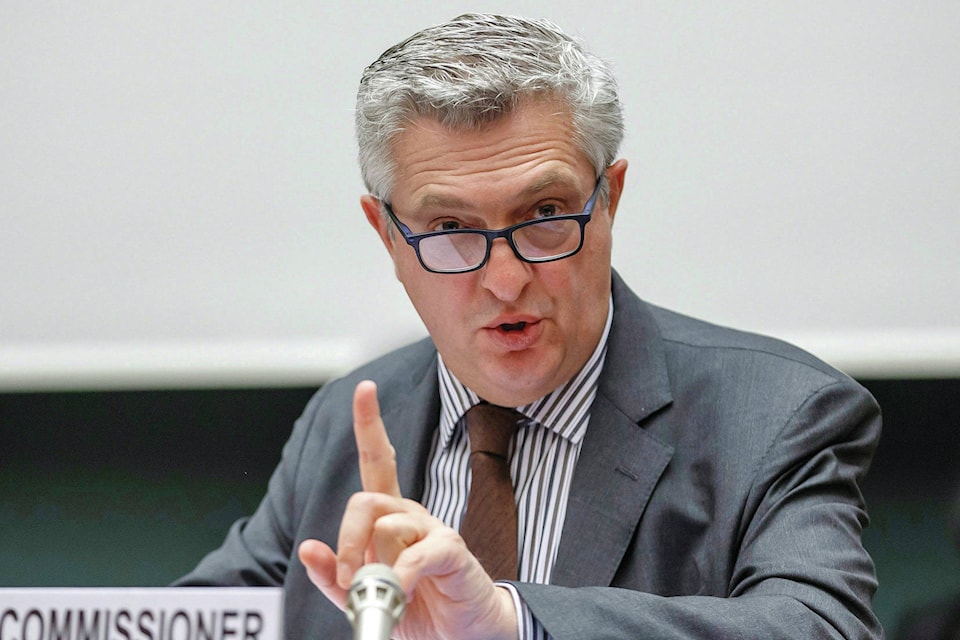OTTAWA — The United Nations High Commissioner for Refugees arrives in Canada this weekend for what his agency had hoped would be a chance to publicly applaud Canada’s decision to take in a higher number of refugees next year.
But it might be half-hearted applause: while the federal government is set to increase the number of privately sponsored refugees, the number they’ll take via the UN remains the same.
That’s despite a massive push by the agency to find more resettlement spaces for the estimated 1.2 million people it believes will need new homes next year at a time when finding those spots is becoming harder and harder.
The UNHCR’s Filippo Grandi made a passionate appeal Thursday to the UN Security Council — a body on which Canada is hoping to gain a seat in four year’s time — for more action and advocacy in the face of multiplying crises around the world displacing tens of millions of people.
“Many refugee-hosting states, particularly those neighbouring conflict zones, keep their borders open and generously host thousands — sometimes millions — of refugees,” Grandi said.
“But certain states — often those least impacted by refugee flows, and often wealthy ones — have closed borders, restricting access to asylum and deterring entry.”
The United States, which for years has been the largest recipient of UN-referred refugees, appears poised to more than halve its intake in 2018, going from a cap of 110,000 planned admissions in 2017 to just 45,000 in 2018.
The plan released by Immigration Minister Ahmed Hussen on Wednesday calls for Canada to take in 43,000 refugees and protected people next year — an increase of just 3,000 over this year.
The number of government assisted refugees remains the same as 2017, at 7,500 people. The increase comes via the private sponsorship of refugees and an expected rise in the number of asylum claims lodged in Canada that are accepted.
By 2020, the overall level will rise to 48,700, including about 10,000 government assisted refugees and about 20,000 privately sponsored.
“Canada’s commitment to refugees must not be privatized: the government needs to take the lead by resettling more refugees than private citizens do,” the Canadian Council for Refugees said in a statement.
“We are very concerned to see that the government is intending to resettle only half the number of privately sponsored refugees, especially as government-assisted refugees are those identified by the UNHCR as the most vulnerable.”
In an interview with The Canadian Press ahead of the plan, Hussen said the focus on privately sponsored refugees stems from a desire to clear a major backlog of applications in that program as well as the outcomes — PSRs, as they are known, traditionally find jobs and get off government assistance sooner than their government assisted cohort.
